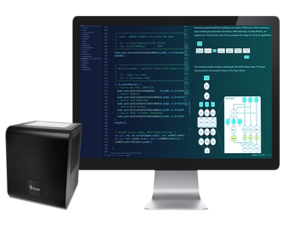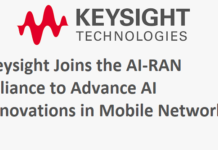
Blaize unveiled a groundbreaking next-generation computing architecture that precisely meets the demands and complexity of new computational workloads found in artificial intelligence (AI) applications.
Driven by advances in energy efficiency, flexibility, and usability, Blaize products enable a range of existing and new AI use cases in the automotive, smart vision, and enterprise computing segments, where the company is engaged with early access customers. These AI systems markets are projected to grow rapidly as the disrupting influence of AI transforms entire industries and AI functionality becomes a “must-have” requirement for new products.
Blaize Graph Streaming Processorä (GSP) architecture: the first to enable concurrent execution of multiple neural networks and entire workflows on a single system, while supporting a diverse range of heterogeneous compute intensive workloads
Fully programmable solution brings new levels of flexibility for evolving AI models, workflows, and applications that run efficiently where needed, a breakthrough for dynamic intelligence at the edge
Directly addresses technology and economic barriers to AI adoption via streamlined processing that yields 10-100x improvement in systems efficiency, lower latency, lower energy, and reduced size and cost
Early access customer engagements since 2018 in automotive, smart vision and enterprise computing segments
Graph-Native Techniques Drive Huge Efficiency Gains
The scope and capabilities of the comprehensive Blaze technology stack is unprecedented. The Blaize GSP architecture and Blaize Picassoä software development platform deliver breakthroughs in computational efficiency. The solution blends dynamic data flow methods and graph computing models with fully programmable proprietary SOCs.
This allows Blaize computing platforms to exploit the native graph structure inherent in neural network workloads all the way through runtime. The massive efficiency multiplier is delivered via a data streaming mechanism, where non-computational data movement is minimized or eliminated. This gives Blaize systems the lowest possible latency, reduces memory requirements and reduces energy demand at the chip, board and system levels.
Blaize GSP is the first fully programmable processor architecture and software platform that is built from the ground up to be 100% graph-native. While there are many types of neural networks, all neural networks are graphs. With the inherent graph-native structure, developers can now build multiple neural networks and entire workflows on a single architecture that is applicable to many markets and use cases.
End-to-end applications can be built integrating non-neural network functions such as Image Signal Processing with neural network functions, all represented as graphs that are processed 10-100 times more efficiently than existing solutions. And AI Application developers can now build entire applications faster, optimize these for edge deployment constraints, and run them efficiently using automated data-streaming methods.


















